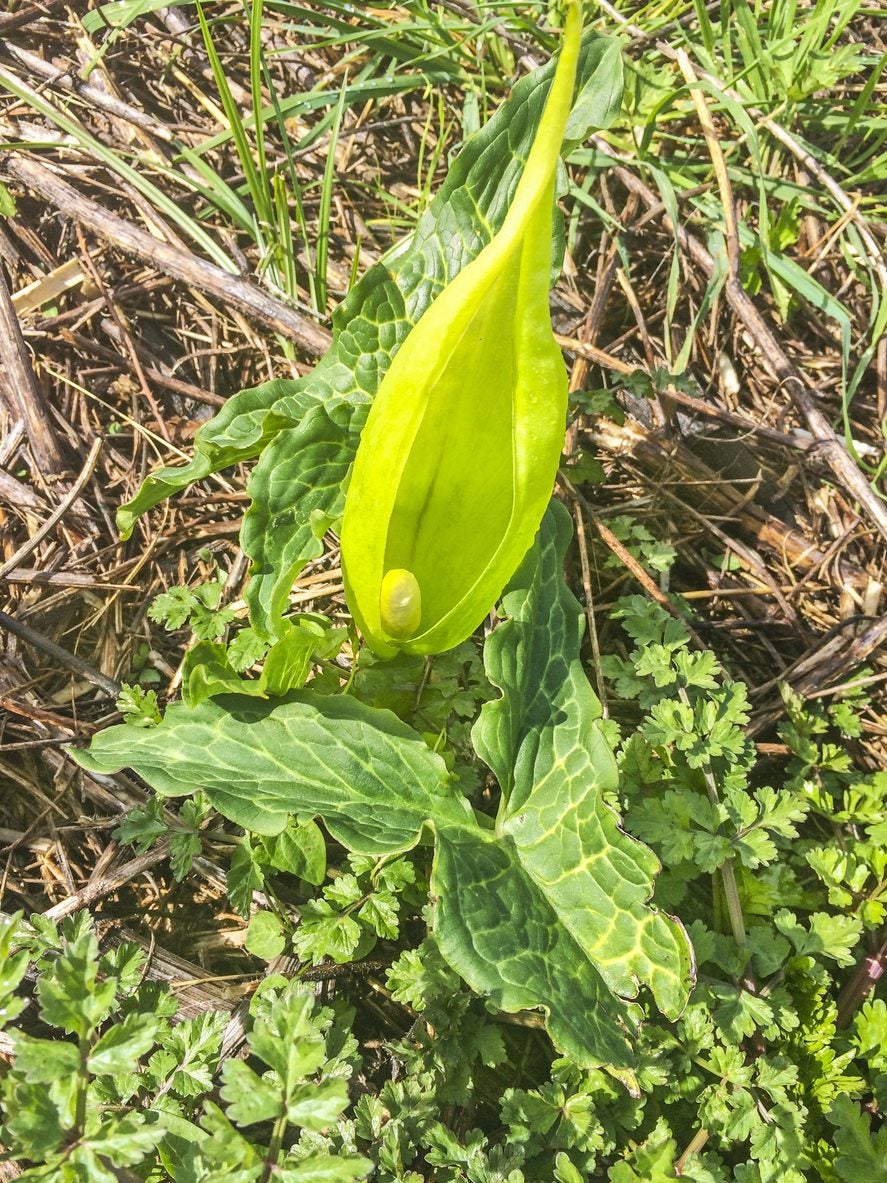Arum Plant Information: Learn About Common Varieties Of Arum


There are over 32 varieties of arum in the family Araceae. What are arum plants? These unique plants are known for their arrow-shaped leaves and flower-like spathe and spadix. Most arums are not frost tolerant, as many are from the Mediterranean region; however, a few European varieties have some cold hardiness. Learn which common members of the arum plant family might thrive in your region and hardiness zone.
What are Arum Plants?
While calla lilies, also known as arum lilies, have the same showy spathe as plants in the arum family, they are not true members of the Araceae group. However, since they are very recognizable plants, their appearance helps explain what arum members look like with exception to height, spathe colors, and leaf sizes. All types of arum plants are poisonous and may not be suitable in gardens with pets and children. Arums are rhizome producing, perennial plants. Most hail from the Mediterranean but some species are also found in Europe, western to central Asia, and in northern Africa. Plants in this family range from nearly 8 inches up to nearly 2 feet in height (20.5-60.5 cm). Plants produce a modified leaf called a spathe that curves around the spadix, which is the source of the true flowers. Spathes may be violet, white, yellow, or brown and may even be sweetly or sharply scented. Flowers develop into red or orange berries.
Arum Plant Information
Most arums prefer moist, well-draining soil, warm temperatures of 60 degrees F. or higher (nearly 16 C.), and rich soil with frequent fertilizing. It is fairly easy to propagate most varieties of arum by leaf cuttings, stem cuttings, layers, or division. Planting by seed can be capricious at best. Outside of temperate to tropical ranges, the cooler region gardener may not have much access to arum plant family members. Of the different types of arum plants seen commonly in the landscape, Jack-in the-pulpit has to be one of the hardiest and most widespread. This small plant eventually produces colonies and attractive white spathes. Anthurium plants are arum plant members, often grown as a houseplant in cooler areas or landscaping plants in USDA zones 10 or higher. Plants in the arum family may also include arrowhead members, also commonly grown as houseplants in many places. Another of the most common arums are the Lords and Ladies, or cuckoopint. Many of the available varieties of arum plants are not common, however, but you can try online nurseries for a broader selection. A European native, Italian arum is a medium sized plant with deeply veined leaves and a creamy, white spathe. There are many varieties of arum that are not directly in the Araceae family but simply grouped in for appearance and convenience. These include:
- Zantedeschia (calla lily)
- Dieffenbachia
- Monstera
- Philodendron
- Spathiphyllum (peace lily)
- Caladium
- Colocasia (elephant ear)
Keep in mind that while they share characteristics with Araceae members, they are not true arums.
Gardening tips, videos, info and more delivered right to your inbox!
Sign up for the Gardening Know How newsletter today and receive a free copy of our e-book "How to Grow Delicious Tomatoes".

Bonnie Grant is a professional landscaper with a Certification in Urban Gardening. She has been gardening and writing for 15 years. A former professional chef, she has a passion for edible landscaping.
-
 Pruning Limelight Hydrangea Bushes For Bigger Blooms & Stronger Plants
Pruning Limelight Hydrangea Bushes For Bigger Blooms & Stronger PlantsPruning 'Limelight' hydrangea will benefit the shrub. Flowers will be more bountiful the next year and branches will be stronger. Learn how and when to prune.
-
 What’s Wrong With Your Azaleas? Identify, Tackle And Prevent 6 Common Azalea Pests
What’s Wrong With Your Azaleas? Identify, Tackle And Prevent 6 Common Azalea PestsIf you’ve spotted signs of azalea leaf damage, don’t panic – here’s how to identify the most common azalea pests so you can take action swiftly and keep plants healthy
-
 8 Easy Care Houseplants That Live A Long Time
8 Easy Care Houseplants That Live A Long TimeClick here to learn about our 8 favorite low maintenance houseplants that can, with proper care, live a long time.
-
 How Often Should You Repot Plants?
How Often Should You Repot Plants?Escaping roots and shrinking leaves may mean your plant wants a new pot, but some like staying cramped and cozy.
-
 Orange Flowering Houseplant Varieties With Tropical Flair
Orange Flowering Houseplant Varieties With Tropical FlairClick here to learn about some cheerful orange-blooming houseplants you can try growing.
-
 Variegated Houseplants With Lovely Leaves
Variegated Houseplants With Lovely LeavesWhat are some of the best variegated houseplants to add to your collection? Click here to find out.
-
 Lovely, Lacy Indoor Foliage Plants
Lovely, Lacy Indoor Foliage PlantsClick here to learn about some houseplants with lacy foliage to add to your collection.
-
 Best Christmas Houseplants And Plants For Winter Holidays
Best Christmas Houseplants And Plants For Winter HolidaysClick here for an idea of the best houseplants to use for holiday décor for Christmas, Hanukkah, Kwanzaa, and New Year’s.
-
 Best Big Houseplants To Create An Indoor Oasis
Best Big Houseplants To Create An Indoor OasisIf you have the space you may want to grow some large houseplants. Here are some ideas.
-
 Relaxing Plants To Grow Indoors For A Calmer Mind
Relaxing Plants To Grow Indoors For A Calmer MindAre there houseplants that can help you to relax? Click here to find out.